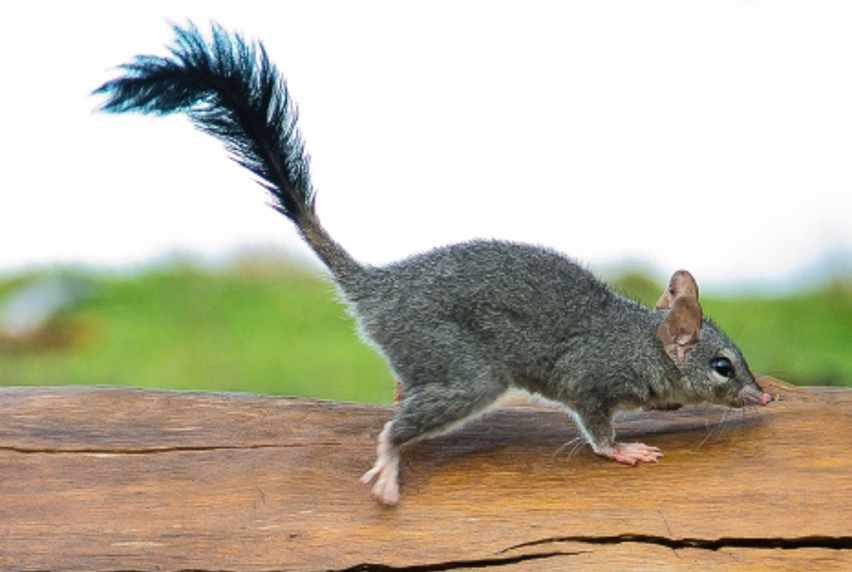Found! Students Film Elusive Brush-tailed Phascogale

This is a Tuan, the tiny furry creature causing quite a stir with its video 'capture' by Melbourne Polytechnic students.
The Tuan’s official name is the Brush-tailed Phascogale (Phascogale tapoatafa tapoatafa) and it’s listed as “vulnerable” in Victoria - facing a high risk of extinction in the wild.
It was captured on video by Diploma of Conservation and Land Management students in the field, who had set up remote sensing cameras after their investigations led them to believe the phascogale might be living there.
“This is a real-life big deal,” second-year student Dale Mamo said of the discovery.
“It’s such a good species to find because they’re so rare and they’ve never been identified in that area before.”
“There are only about 15,000 in the wild and they are a bit of an indicator species of a good habitat and good ecology in the area.”
“Their activity and their population really fluctuate with drought or other bad conditions.”
“As an indicator they are a really good species, because they are a highly impacted species from human interaction and introduced species, particularly foxes which predate upon them.”
Dale said he and his classmates from the Epping campus were still coming to terms with the significance of their encounter with the small, nocturnal, arboreal, carnivorous marsupial.
The 21-year-old described how they were out in the field checking the cameras on their laptops as they did every Wednesday.
“It went silent for a bit and then they called us over – ‘I think you’re going to want to come see this’. “
“It was a monumental moment.”
“It’s not like we just figured something out for school – it’s an actual real-world thing, we’re pretty stoked about it.”
Technician Jennifer Gibson said Melbourne Polytechnic’s Department of Agriculture and Animal Studies had two remote sensing cameras and the City of Whittlesea Council loaned the students four more, so they could set up at the dams and in the woodland areas, on the ground along a well-defined wildlife path and up in the trees.
She said students checked the cameras weekly and downloaded all the images. They also captured footage of other native mammals such as the Eastern Grey Kangaroo, Common Wombat, Swamp Wallaby and Common Ring-tailed Possum and feral mammals including Samba Deer, European Red Fox, and the domestic cat.
Traditionally, fauna surveys have included trapping and spotlighting, but remote sensing cameras are less invasive, less time consuming, less costly and more effective for detecting the presence of elusive and nocturnal species.
Dale said the students’ data will be shared with the City of Whittlesea environmental team as “This data is really important to influence the future management decisions of the area to protect this species because it’s an Australia-wide threatened species”.
The student’s research reports had several recommendations for the land managers, including ongoing feral animal control, particularly with foxes and cats, the major predation threat; creation of artificial tree hollows to boost the existing habitat, and ensuring phascogale habitat areas are not affected by planned burning operations.
Dale said his diploma studies could be a pathway to further study in a more specialised area.
“The Conservation & Land Management diploma is much broader than I thought and there are a lot of avenues you can go down,” he said.
Learn more about our Agriculture and Conservation courses.
Image: Wayne Williams